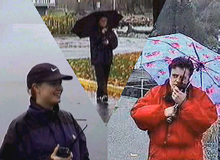Amateur radio is a great hobby for it allows one to use amateur radio equipment in the comfort of their home or car to communicate with other radio enthusiasts, not only locally around town but also worldwide via the Internet Radio Linking Project (IRLP) It is also possible to meet with a group of hams at an arranged time on a particular frequency. This is called a Net.
Many hams continue their studies because they want to operate a HF (High Frequency) transceiver which will make it possible for them to talk to other hams worldwide using wireless amateur radio communication means. This requires that the ham to pass a 5 wpm Morse code qualification exam. This is not a difficult task and enables the ham to have access to all communication modes, of which there are many.
You might be thinking how does a radio signal with no transmission lines, other than that leading to the antenna, be received by other antennas thousands of miles away. Simply explained, the radio signal radiated by the antenna penetrates the ionosphere and is reflected back to earth. The earth in turns reflects it back up to the ionosphere and down again causing the signal to hop around the Earth.
Just think how exciting and interesting amateur radio can be when an operator calls CQ CQ CQ. He/she never knows who is going to answer them. CQ (seek you) is a general call and indicates the person calling wants to contact any station listening. That station could be an amateur radio operator from any one of five continents, who likely speaks English!
Amateur radio operators can communicate in many ways, but the two most popular modes of worldwide communication are Morse code (CW) and Phone (SSB). Phone is another word for voice communication. Both modes require a transceiver (radio) and a homebrew or commercial antenna to radiate the signal.
Within this diversified hobby, amateur radio operators, of all ages, with widely varied economic, educational, ethnic, and cultural backgrounds can come together in an atmosphere of friendliness and acceptance to discuss and pursue specific radio interests.
Amateur Radio Areas of Interest
-
Helping others by providing emergency communication during earthquakes, flooding, chemical spills, forest fires, car accidents, boats in distress, etc.
-
Providing communication for community events such as marathons, yacht races, summer and winter provincial games, parades, etc.
-
Talking to astronauts orbiting Earth.
-
Ragchewing (conversing) with other hams on the air.
-
Becoming a skilled CW or Morse code radio operator.
-
Joining a local amateur radio club to make new friends, promoting amateur radio, and learning more about your hobby.
-
Becoming an Elmer (mentor) so that you can help other new hams.
-
Participating in amateur radio contests with other hams to see who can make the most contacts.
-
Searching for radio contacts with other countries and subsequently exchanging QSL cards with other hams to confirm contacts. Many DX Awards are available in recognition of radio achievements.
-
Attending amateur radio conferences locally, nationally, and worldwide.
-
Becoming proficient in one or more radio modes: PHONE, CW, IRLP, RTTY, FM, PKT, AMTOR, etc.
-
Connecting computers to amateur radio equipment.
-
Operating QRP radios using less than 5 watts of power.
-
etc.. etc.. etc..

Listen to 3 YLs having a 2 Meter QSO (Conversation)!

Click here to listen to the QSO in Real Audio format.


Back to Top

 YLRADIO Home
Becoming a Ham
YLRADIO Home
Becoming a Ham 

2008 - 2015
Copyright
�